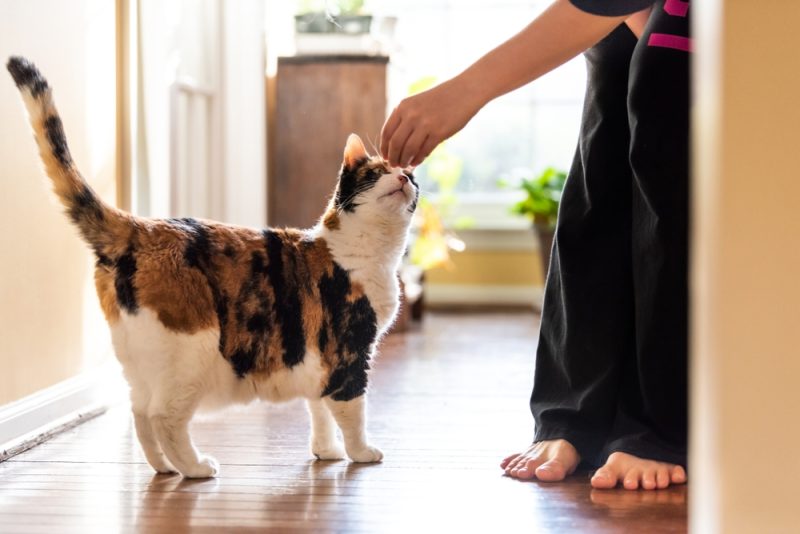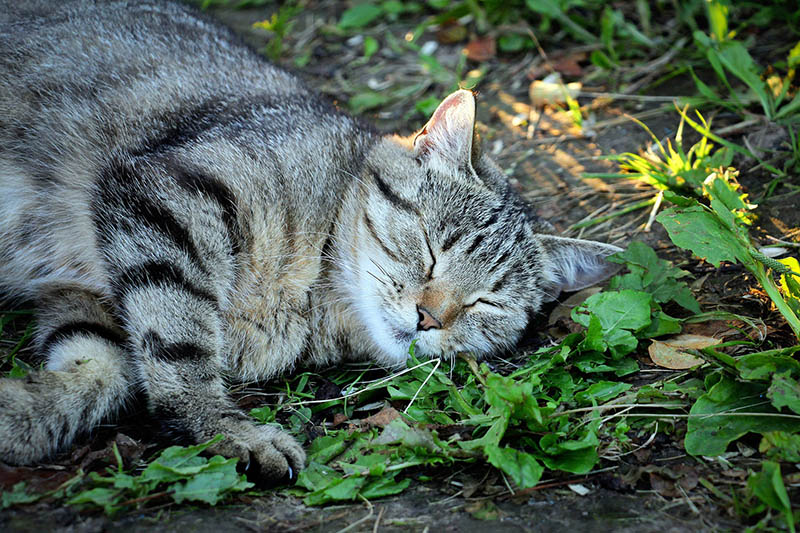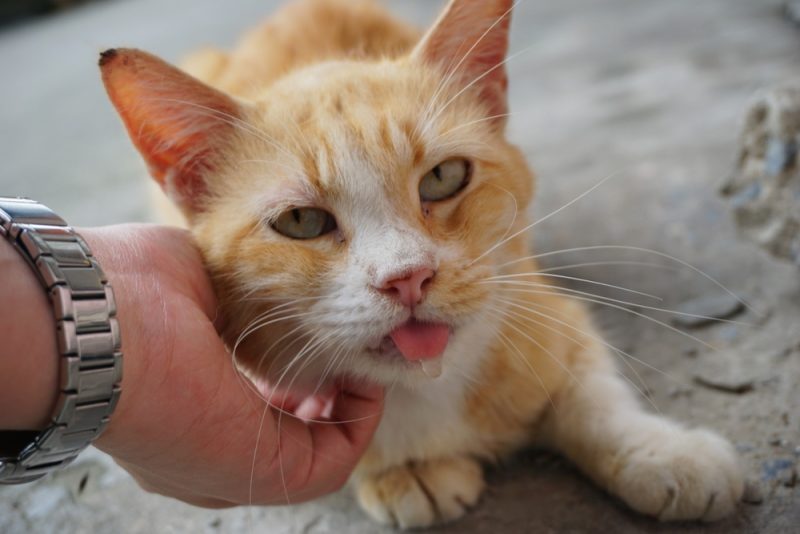In this article
View 3 More +Training a cat might sound impossible, especially if you’ve ever owned one before (we know how stubborn they can be!). But the truth is that cats are highly intelligent and can be trained easily with the right approach. There is no set timeline for how long it’ll take to train your kitty, but you can expect them to start catching on within a handful of sessions if you’re using the right techniques.
Read on to learn more about training your cat, including our tips to speed up the process.

How Long Does It Take to Train a Cat?
The time it takes to train your cat will depend entirely on what you want it to learn, your patience, and your consistency with training. Some cats will catch on to easier tricks or concepts within a few sessions, especially if they’re highly food or play-motivated. Others are lazier and may take several weeks to catch on.
The 5 Tips for Training Your Cat Quickly
1. Find Your Cat’s Motivation
Your cat is much more likely to be interested in your training sessions if you have the right reward on hand to offer them. First, determine whether your cat is food, praise, or play motivated. Some cats will do anything for a treat, while others prefer play time or praise to be their reward for a job well done.
Once you know what motivates your cat, you can adjust how you reward your pet during your training sessions.

2. Use High-Value Rewards
You know what motivates your cat during their training sessions, but now your job is determining what they consider to be a high-value reward. For food- or play-motivated cats, never use treats or toys your cat can access regularly. For it to be considered “high value,” the food or toy your cat receives needs to be special and used only during training. So, put those dry cat treats back in the drawer, and reach for something a little more incentivizing, like lickable treats or even plain, cooked chicken breast.
3. Be Consistent
As with anything, practice makes perfect, and repetition is key. You must be consistent with your training regimen for your cat to catch onto concepts and tricks faster. Start with short 5-minute sessions daily; once your kitty realizes that training equals rewards, you can move to twice-daily sessions.

4. Don’t Force It
There’s one surefire way to ensure your kitty despises training, and that’s forcing them to participate. Of course, you already know that cats are stubborn and march to the beat of their own drum, so don’t expect your kitty to always be willing to participate in the training sessions. If your cat is not showing interest in the rewards or what you’re trying to teach, pack up your training tools, and try again later. Trying to force them to sit still when they want to play or nap will only cause resentment and slow your progress.
5. Try Clicker Training
Clicker training is an often-used form of positive reinforcement training that many cats respond well to. Your goal is to get your cat to associate a noise (the clicker’s click) with something positive (a reward).Once your kitty knows that when they hear the click, they will get a reward, it’s easier for you to use your clicker to teach desirable behaviors.
Take teaching your cat to sit on command, for example. Raise your hand above and just behind your cat’s head in such a way that it forces the cat to sit down to keep their focus on the clicker. Once the cat sits, make the clicking sound, say “sit” and offer a reward.

What About Litter Training Your Cat?
Using a litter box is one of the first and most essential skills kittens need to learn. Of course, most adoptable cats and kittens are already litter trained, but if you’re breeding cats or have adopted one that never learned to use a litter box, this is the first thing you’ll want to teach it.
The litter box needs to be in a quiet and clean place. Cats are fastidious creatures and do not like using a dirty box, so you may notice more frequent accidents if you’re slacking on your box-cleaning duties.
After your cat has a meal, move it to the litter box. Pick up its paw and show it how to scratch at the litter. Once it uses the litter box, immediately provide a reward and remove it from the area.
After your cat has a meal, place them in the litter box. Pick up their paw, and show them how to scratch at the litter. Once they use the litter box, immediately provide a reward.
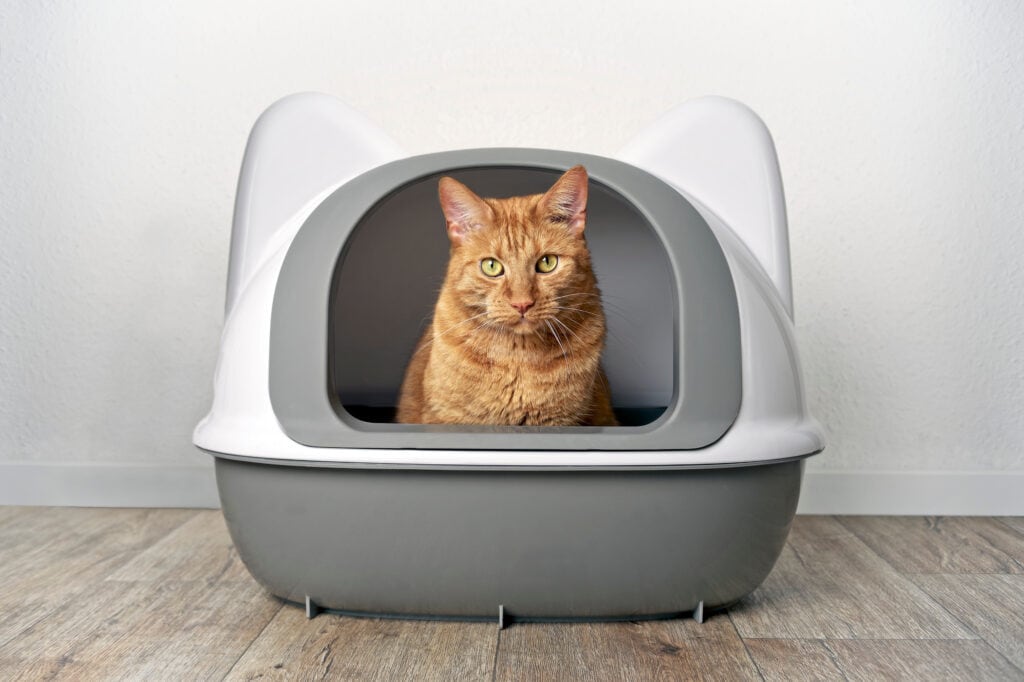
How to Carrier Train Your Cat
Your cat’s carrier can be a huge source of stress. After all, they get shoved into it whenever they go to the big, scary veterinarian’s office. If you can help your cat to associate positive things with their carrier, traveling with them will be much easier and less stressful for you both.
First, put the carrier in a common space in your home, somewhere your cat spends a lot of time. Leave the door open, and put your pet’s favorite treat or toy inside. When your cat ventures inside the carrier, reward them with a few pets or scratches. Once you can tell your cat is comfortable in the carrier with the door open (this can take a few days), try closing the door. Leave it closed for a few seconds at a time, slowly building up how long you leave it closed as your kitty gets more comfortable.
Once your cat is used to the door being closed, begin carrying it around your home to get your cat used to being carried in it. With enough practice, your pet will be a professional when it comes time to travel.
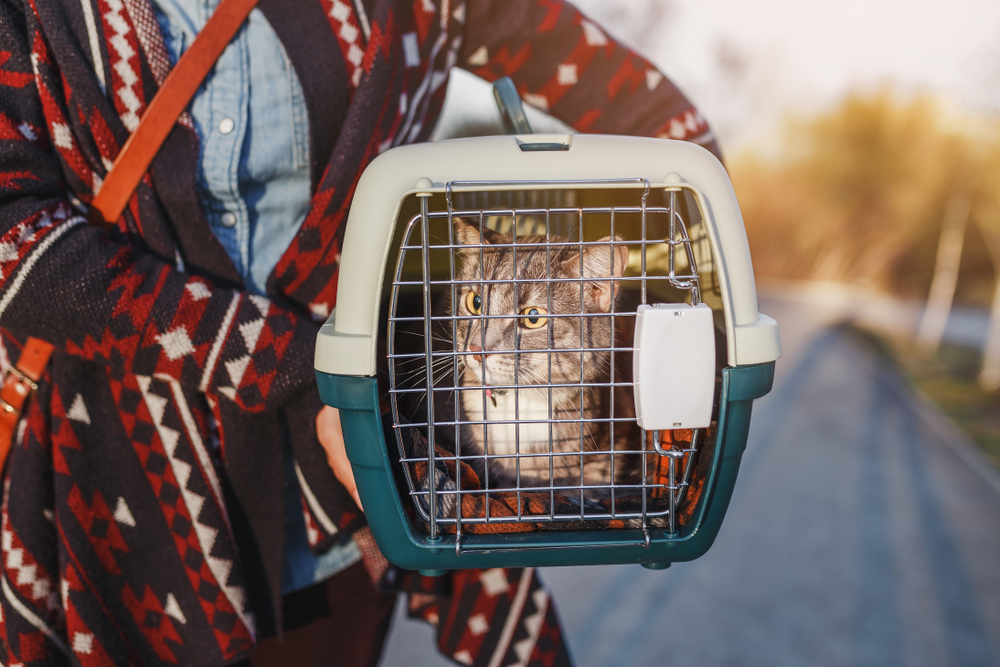
Train Your Cat to Stay Off the Countertops
Cats think they own your home and will help themselves to anything they can get their paws on. They’ll explore areas you’re not necessarily happy they’re curious about, including your kitchen countertops. Not only are your counters potentially dangerous (sharp objects, hot stoves, etc.), but your kitty’s litter-caked paws aren’t the most sanitary things to have in your cooking area.
Clicker training works great for teaching your cat to stay off the countertops, but you’ll need a cat tree or perch set up in your home for it to work. Cats often jump on counters because they like to be up high to feel safe and to survey the goings-on in the house at a safe distance. Whenever you see your kitty on the cupboard, simply remove them, and place them into their cat tree or perch. Then, press the clicker button and reward them with a treat. When your kitty goes onto the tree by themselves, click and reward. The goal is for your pet to associate their cat tree with positivity, so they’ll choose to go there instead of your counters.

Final Thoughts
Training a cat may take a bit more time than training a dog, but it’s still something you should set aside time to do. A well-trained cat will be better behaved and much easier to live with than one that has never been trained at all. Remember that finding your cat’s motivation and the perfect high-value reward will greatly help you with your sessions. The more incentive there is for your kitty to learn, the more interested they’ll be in what you’re trying to teach them.
Featured Image Credit: Andriy Blokhin, Shutterstock
